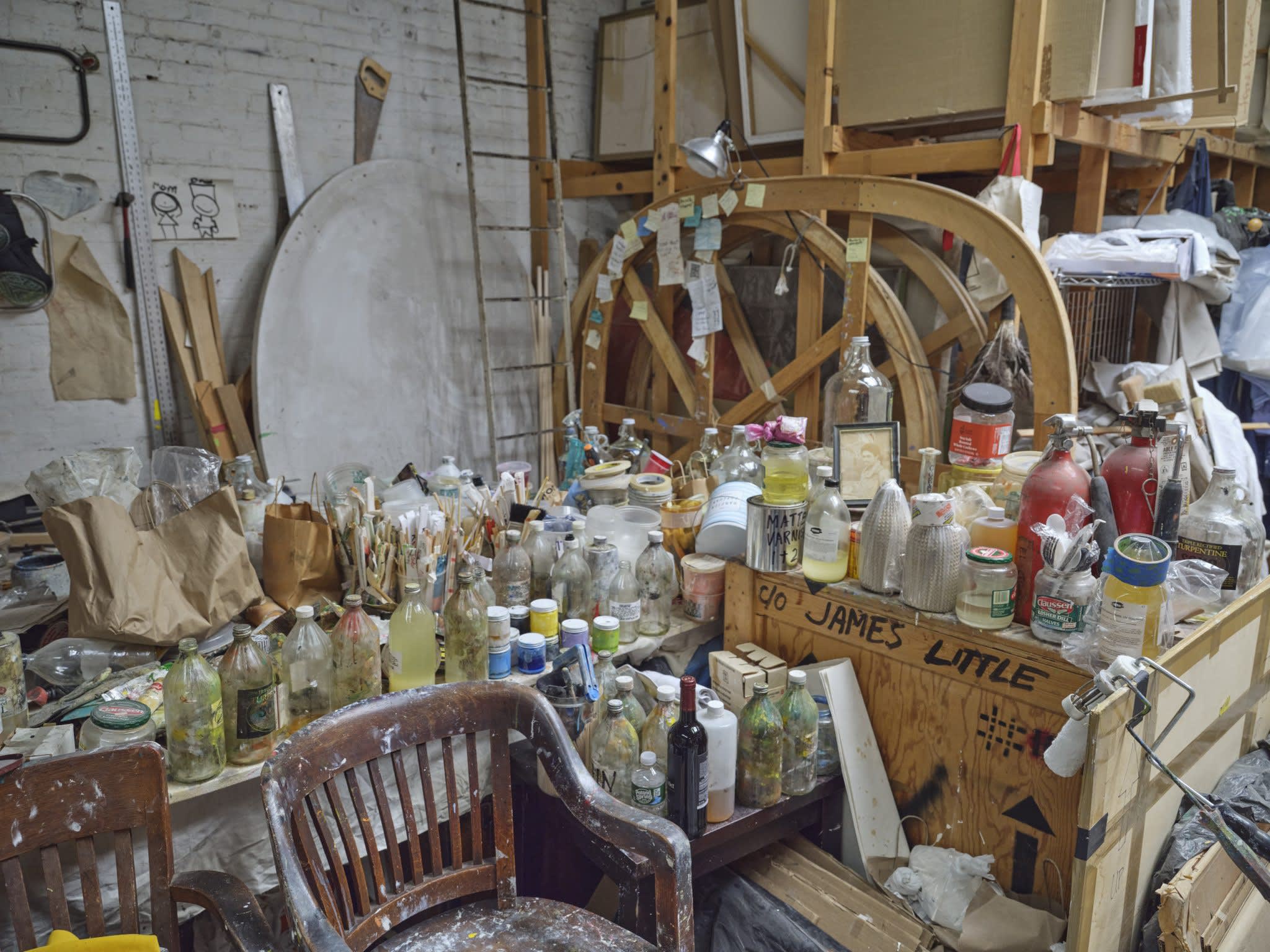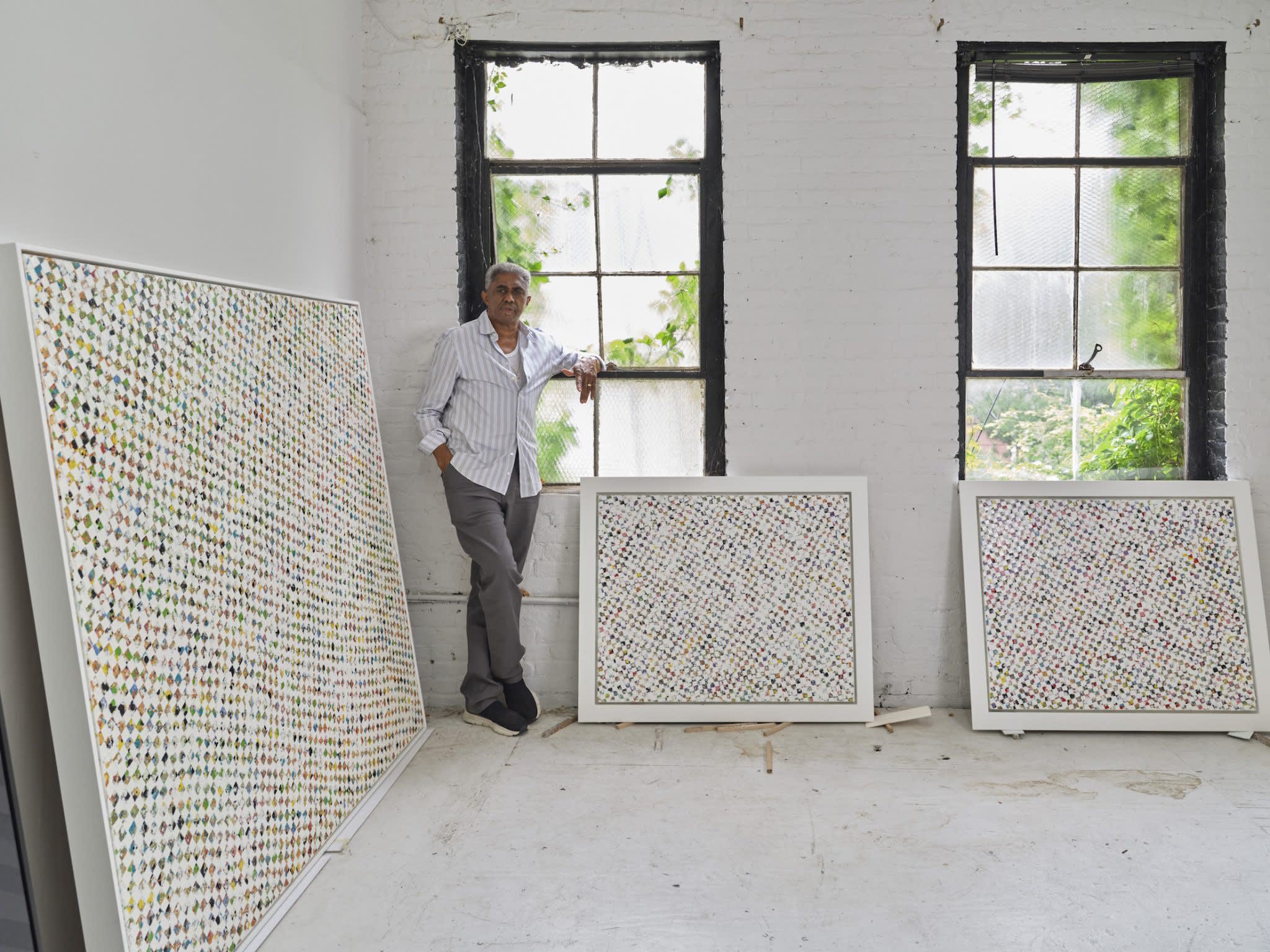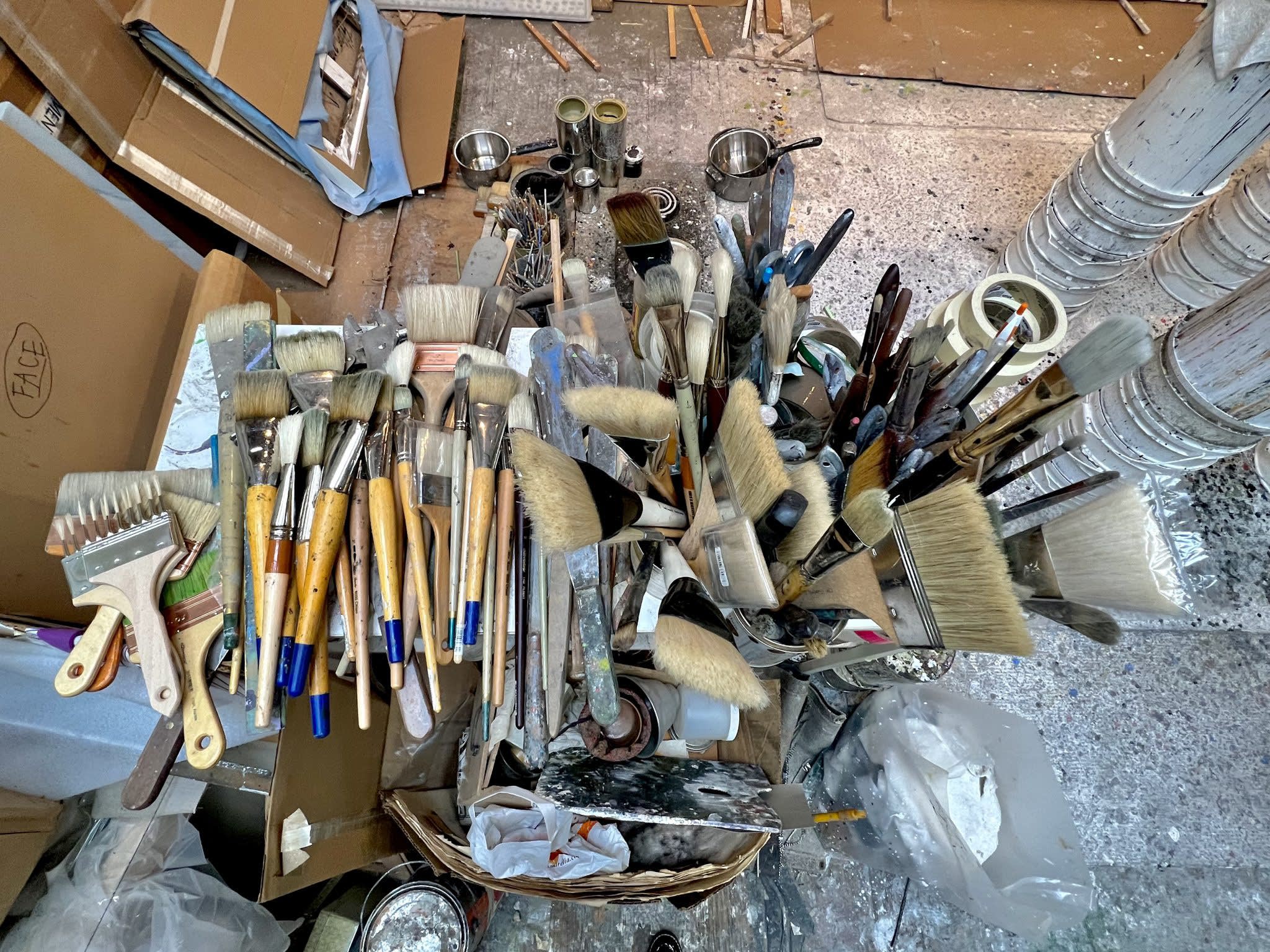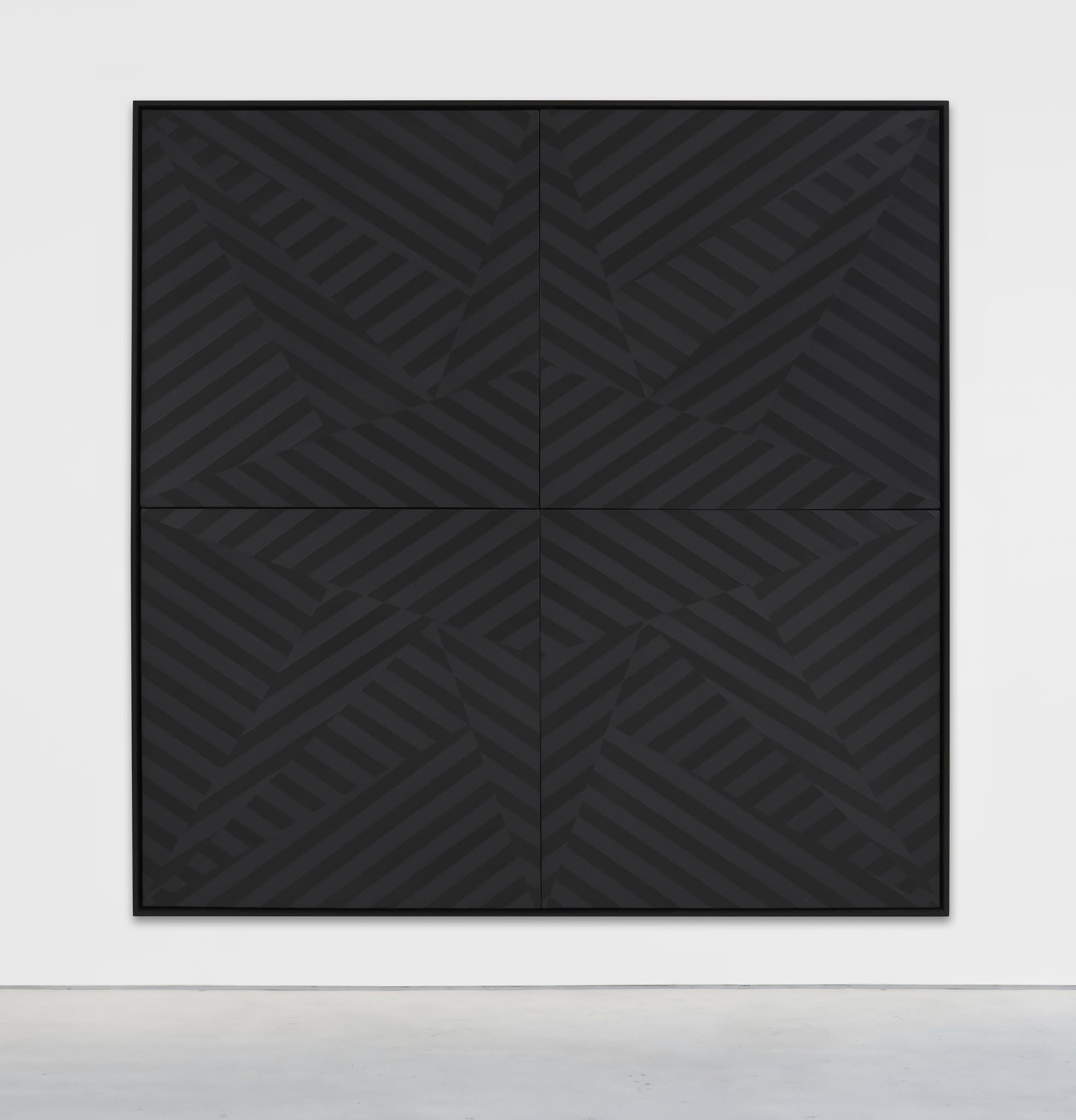
The artist was one of the stars of this year's Whitney Biennial.
It’s been something of a remarkable year for abstract painter James Little, who, at 70, was finally included in the Whitney Biennial in New York, the nation’s leading showcase of contemporary art by American artists.
Now, following other high-profile group shows at the Buffalo AKG Art Museum and the Crystal Bridges Museum of American Art in Bentonville, Arkansas, plus a retrospective at Dixon Galleries and Garden in his hometown of Memphis, Little is closing out the year with his first outing at Chicago’s Kavi Gupta. (Next spring will be his first solo show at Petzel Gallery in New York.)
The artist’s deceptively simple work belies an academic approach rooted in color theory, pictorial design, and a laborious, multi-step physical process that takes months to complete. For each painting, Little combines up to 20 layers of hand-mixed pigments, hot beeswax, and varnish, resulting in what he has dubbed an “alchemy” of paint, imbued with emotion rarely felt in abstract art.
Little sees this complex work in encaustic paint as connected to his family history—relatives who mixed and applied layers of mortar for their jobs as bricklayers in Tennessee, or even his mother’s cooking when he was growing up, preparing meals from scratch for her seven children.
Ahead of the opening of his current show, James Little: Black Stars and White Paintings, the artist gave us a glimpse into his New York studio, where seemingly every surface is covered with well-worn tools, bottles of pigments, beeswax, varnish, and other supplies.

James Little’s studio in Williamsburg, Brooklyn. Photo by Thomas Barratt.
Tell us about your studio. Where is it, how did you find it, what kind of space is it, etc.?
My studio is in the Williamsburg section of Brooklyn. It’s the top floor in a two-story building, what used to be a carriage house. It’s an industrial building. It’s about 2,700 square feet. I found it when I moved to Williamsburg in 1992. I’ve been here for over 30 years.
What is the first thing you do when you walk into your studio (after turning on the lights)?
I take my shoes off.
How many studio assistants or other team members do you have working with you, and what do they do?
None.
What are you working on right now?
I have prepped eight canvases. I work on different paintings at different times, or different ideas at different times.

James Little in his Williamsburg, Brooklyn, studio with some of his White Paintings. Photo by Thomas Barratt.
Can you show us a few different photos of a work in progress, or photos of different works in various states of completion in a way that you think will provide insight into your process?
I don’t have that. That’s not how I work. All of my preparatory stuff is done in stages. At this moment, it’s just primed canvases. It’s just empty space. Three months from now, I’ll have something.
How many hours do you typically spend in the studio, what hours do you work, and what activities fill the majority of that time?
I work 40 to 50 hours per week. My activity involves anything to do with my studio: making varnishes, making paint, priming canvas, sitting and thinking—that kind of thing.

Tools in James Little’s studio in Williamsburg, Brooklyn.
What tool or art supply do you enjoy working with the most?
Painting knives. I have a variety of knives that I use.
How do you know when an artwork you are working on is clicking?
The work always, in some way or another, will tell you what it needs. In order to achieve simplicity, you have to understand a lot of complexities. My Black and White paintings both play with this idea—geometry and color each serve a very distinct purpose and, when integrated just right, you know it’s working.

James Little, Spangled Star (2022).
Do you have any other artist’s work in your studio?
I bought an African shield on the street. It’s not high-end African art. It’s something that was made in Africa, and I liked the design and the approach so I bought it. That’s the only thing in my studio that was made by another artist.
Is there anything in your studio that a visitor might find surprising?
Yes.

James Little in his Williamsburg, Brooklyn, studio with some of his White Paintings. Photo by Thomas Barratt.
What’s the last museum exhibition or gallery show you saw that really affected you and why?
The last exhibition I saw that affected me was in Paris at the Picasso Museum. Picasso’s works in the Picasso Museum. I think it was 2018. The museum just showed his oeuvre. It was really impressive. I was taken by it—his broad vision and his talent. It was just breathtaking. It elevated my opinion of Picasso. Although Cézanne, to me, is the precursor to all of it. But Picasso certainly holds his own. That museum is full of masterpieces.
Where do you get your food from or what do you eat when you get hungry in the studio?
When I get to the studio, if I haven’t brought anything with me, I go to either this Italian restaurant around the corner or this noodle shop—amazing Chinese handmade noodles and dumplings.

James Little, Thespian Stories (2022), detail.
What’s the funniest thing that ever happened in your studio?
Nothing funny has happened. There’s nothing to laugh about. You come in here, it’s all business.
What’s the last thing you do before you leave the studio at the end of the day (besides turning off the lights)?
I say a prayer.

